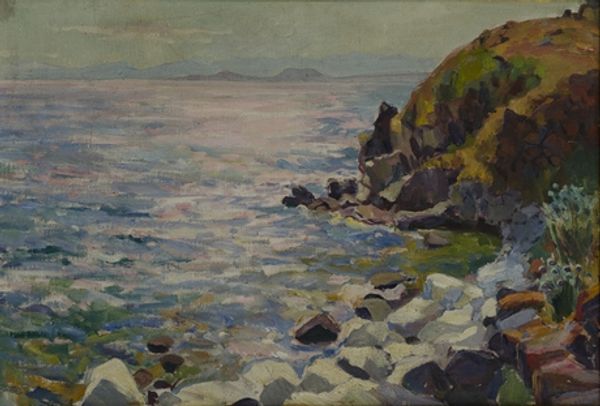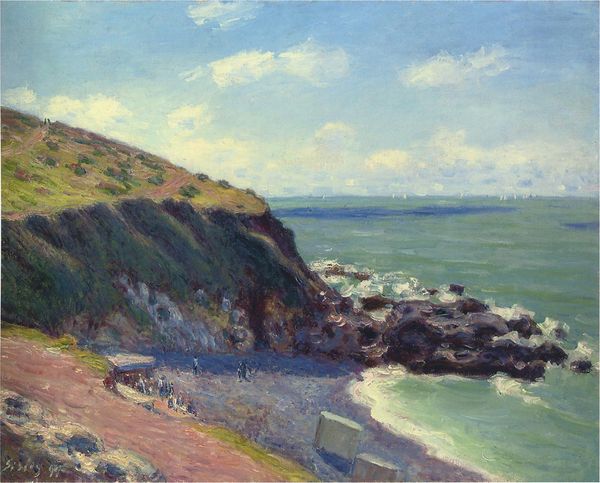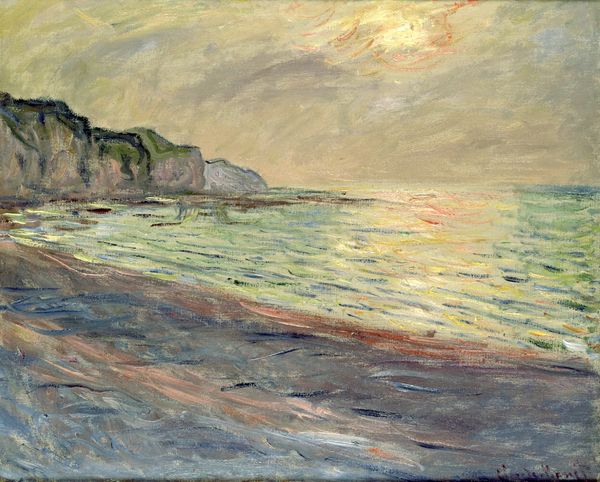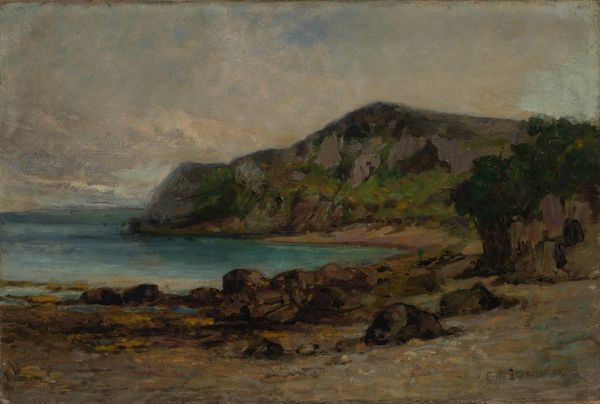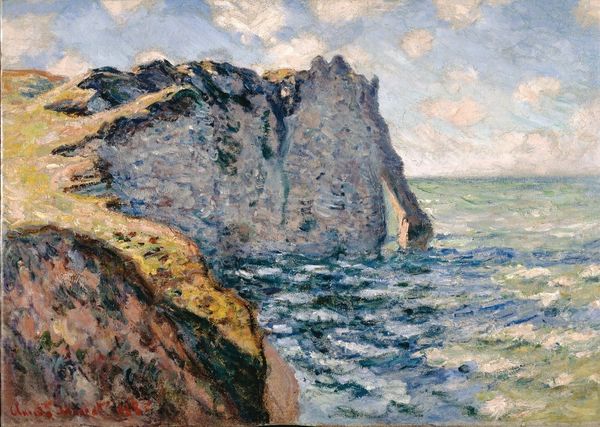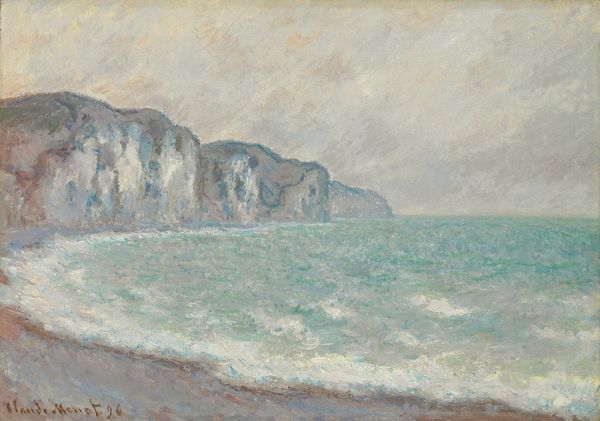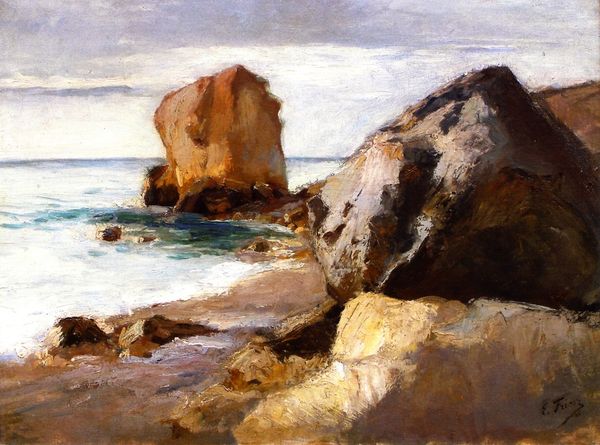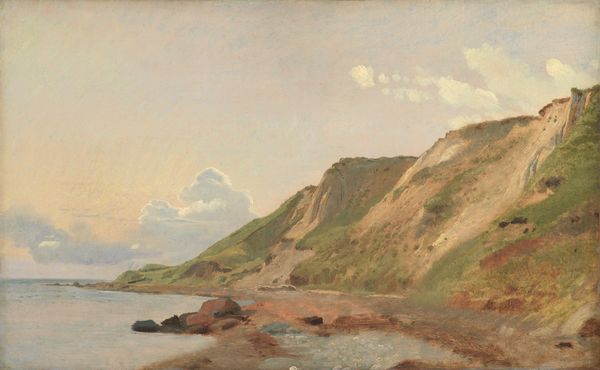
Dimensions: 79.5 cm (height) x 62.5 cm (width) (Netto)
Curator: This is Karl Isakson’s "From Møens Klint," an oil painting completed in 1904. Isakson, known for his plein-air works, captures the imposing cliffs of Møn in Denmark with visible brushstrokes. Editor: It’s funny, I find it serene at first glance. The water looks like a sigh escaping the land. It also reminds me a little of an unfinished symphony. Curator: Observe the composition; the stark contrast between the earth tones of the cliff face and the muted blues and greens of the water and sky is noteworthy. Isakson meticulously segments color to structure form. Note, too, the materiality of paint—it captures the rugged natural architecture of the cliff, in the way it diffracted from a single plane. Editor: Exactly. There's something so honest about the paint itself. It mirrors the unpretentious presence of the cliff. You can almost feel the wind. Curator: Absolutely. In semiotic terms, the cliff serves as a symbol of the sublime, resonating with the Romantic tradition. However, his visible brushwork infuses a distinctly Impressionist concern. The artist is rendering their direct perceptions of that single afternoon. Editor: That makes perfect sense to me. Because of the loose application, you can experience the immediacy of a transient observation. In that moment, light, weather and location become the essential characteristics. This is no allegorical tale. It is, at its most intimate, an experiential memoir. Curator: An insightful comment. It makes me recall the delicate yet determined handling of color across its layered facade, which seems to oscillate. The cliffs are given a sort of silent monumentality. Editor: It does, doesn't it? I imagine this isn't the best example for appreciating Møns Klint. The magic cannot translate to the canvas. That makes me consider the fallacies involved in any act of creative translation, be it textual, painterly, musical… Isakson's failure—the fact that this canvas will always fall short—gives this artwork so much significance. Curator: It has been interesting to dissect Isakson's synthesis of Romantic sentiment and Impressionist technique, but I leave with even greater appreciation for his process. Editor: Indeed. Perhaps Isakson meant for this painting to fail, for our understanding to fall short, and the conversation around its impact to continue.
Comments
No comments
Be the first to comment and join the conversation on the ultimate creative platform.


